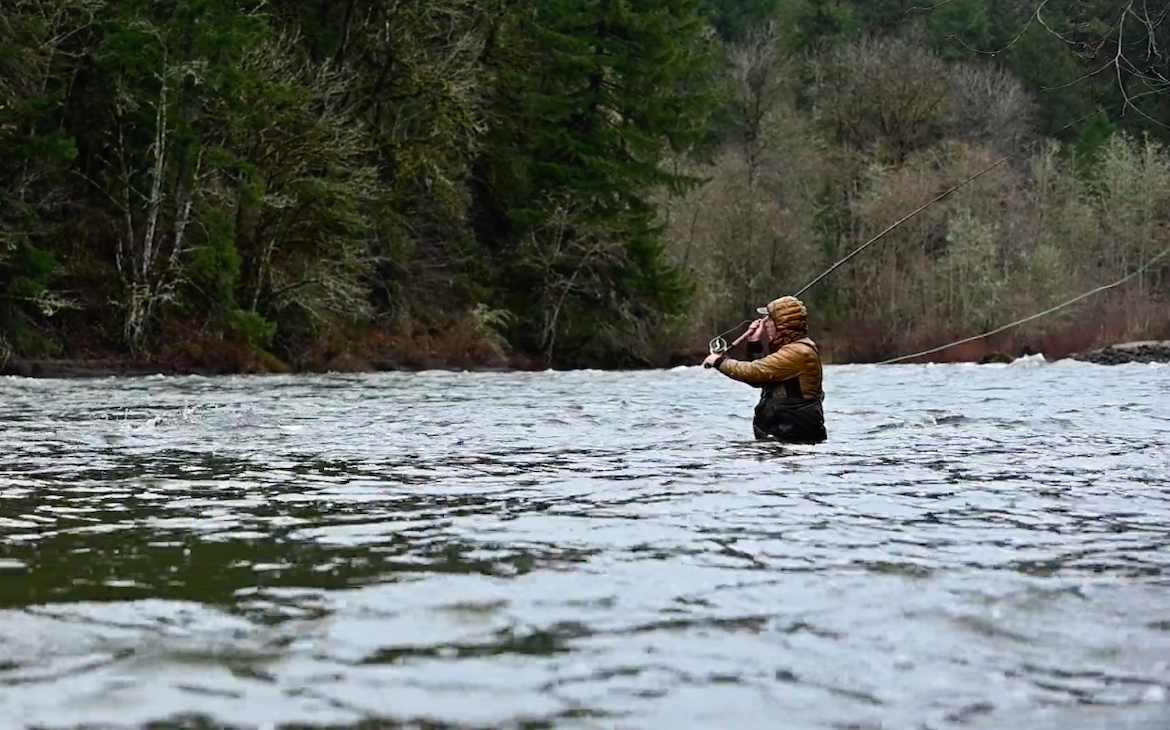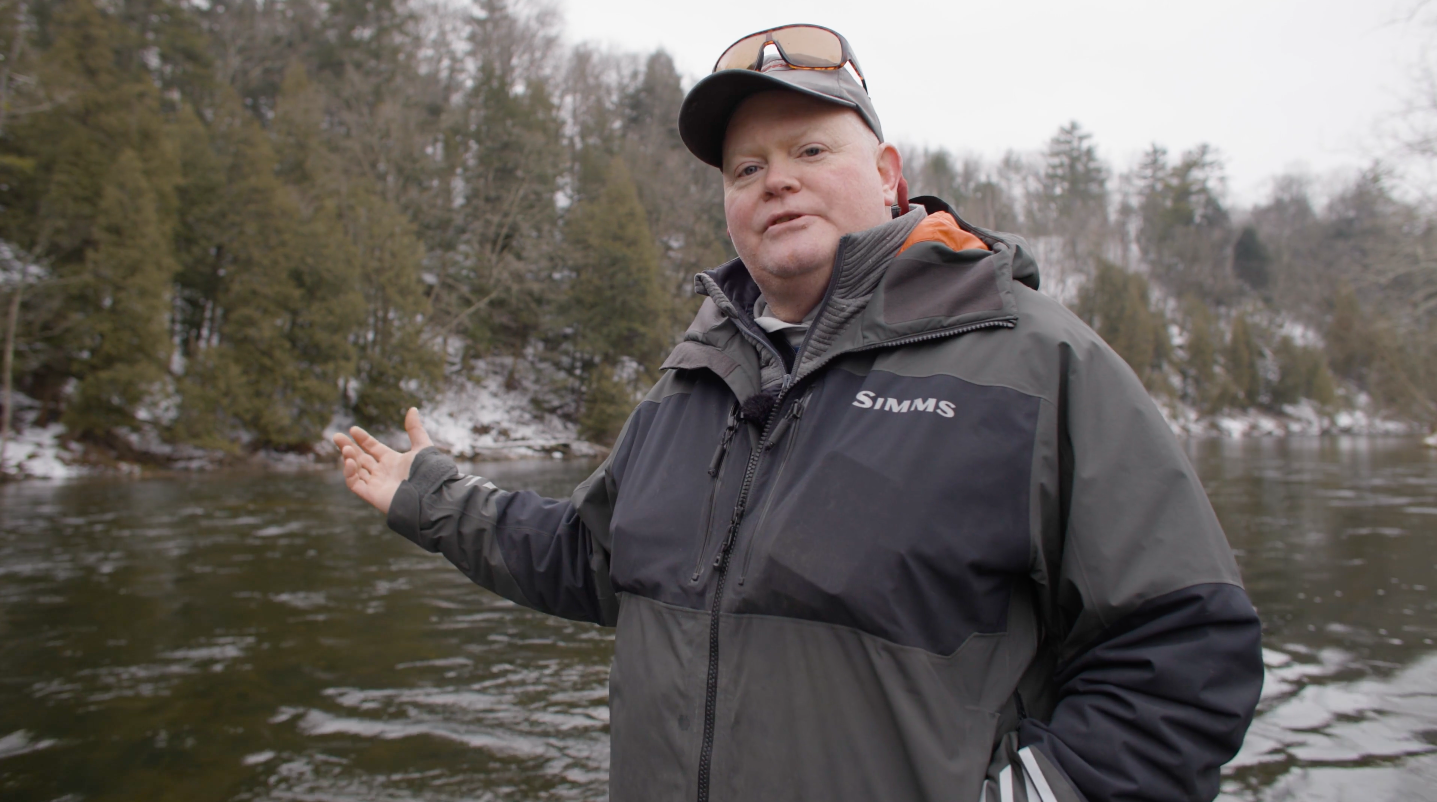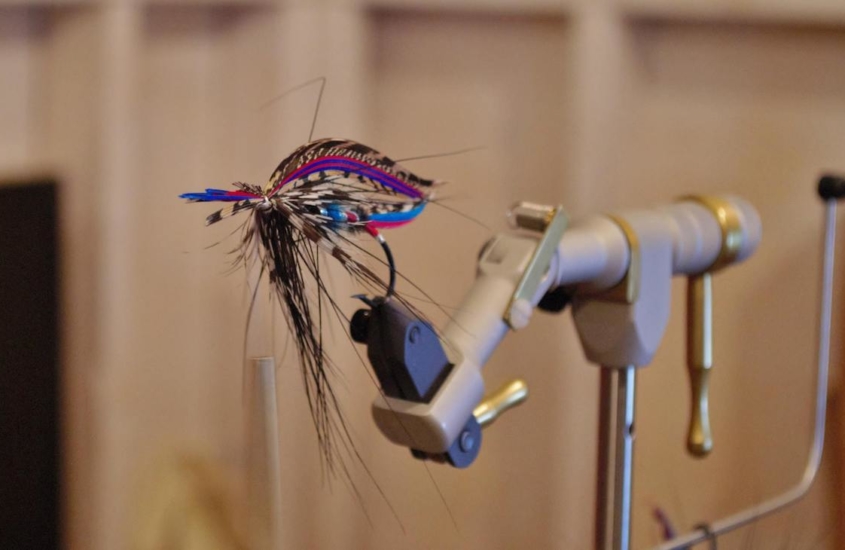By: Jackie Holbrook
Dress for the Weather
You won’t land a winter steelhead if you’re not out on the water. Wearing the wrong gear is the quickest way to call it quits before getting a bite. Layer properly with wool socks, the right baselayers and a warm jacket. Accessorize with a hat, glove and neck gaiter. Be sure your waders and boots aren’t too snug. Cutting off circulation makes you even colder. For more detailed ways to stay warm read, “7 Ways to Stay Warm Fishing This Winter.”
Practice Keeping a Tight Line
Steelhead can be finicky fish. If you want to trick them into eating your fly, you’ll need the right presentation. The right rod is helpful, but it won’t make you a better caster without putting in the practice.
“Practice makes your winter steelhead fishing more enjoyable,” advises Mia Sheppard in the Anchored Outdoors Online Course “Intro to Winter Steelhead Fishing.”
In the class, Marty Sheppard recommends practicing a tight line swing. Having a tight line from the beginning gives the fly the right movement. He says, in general, steelhead aren’t very aggressive during the winter. He encourages anglers to work on having a consistent speed with their swing. He says if the fly is too jumpy it may spook the fish and discourage a bite. Also, Marty says not to fish out a bad cast. He believes bad presentation can sweep fish out of a spot. He encourages anglers to recast until the leader rolls over and lands in a straight line on the water.
Consider the Conditions for Fly Selection
There’s no magic fly that works all the time. Fly selection should be based on the conditions of the water and weather. Your choice might even come down to the individual run you’re swinging through. That’s why it’s important to always carry a variety of flies in your box.
As a general rule, Mia says to fish bright flies on bright days, and darker flies on cloudy days. If the water is high, switch to a weighted fly so it gets deeper quicker. In clear water, use a smaller profile fly. But Mia’s biggest piece of advice for fly selection is that you should be confident in what you pick.
If you get a bite, it’s always worth changing flies and trying again. Marty Sheppard says often steelhead won’t take the same fly, but he’s seen new flies trigger them again.
Play it Right
If you’ve ever hooked into a chromer, you know the importance of playing it right. Landing one is anything but a guarantee. Through years of practice, Marty has picked up some tips. Once the steelhead eats, wait until it’s heavy and taking line off the reel before making any movements with the rod. He says it’s important to set the rod tip toward the bank, never toward the river.
He also likes to play the fish by keeping his rod low. He said this gives the right amount of tension to keep the fish on. Steelhead are notorious for making big runs and many anglers make the mistake of trying to net them before they’re ready. Marty says you’ll know the fish is ready when you can lift its head, but always be prepared to let it run one last time if it wants. Once it’s in the net, always remember proper fish handling techniques like keeping it wet.
Winter steelhead fishing is truly something special. It’s an excuse to get out in the elements and hook a once-in-a-lifetime fish. Whether you’re a beginner or seasoned pro, there are tips for everyone in Anchored Outdoors’ course “Intro to Steelhead Fishing.”













